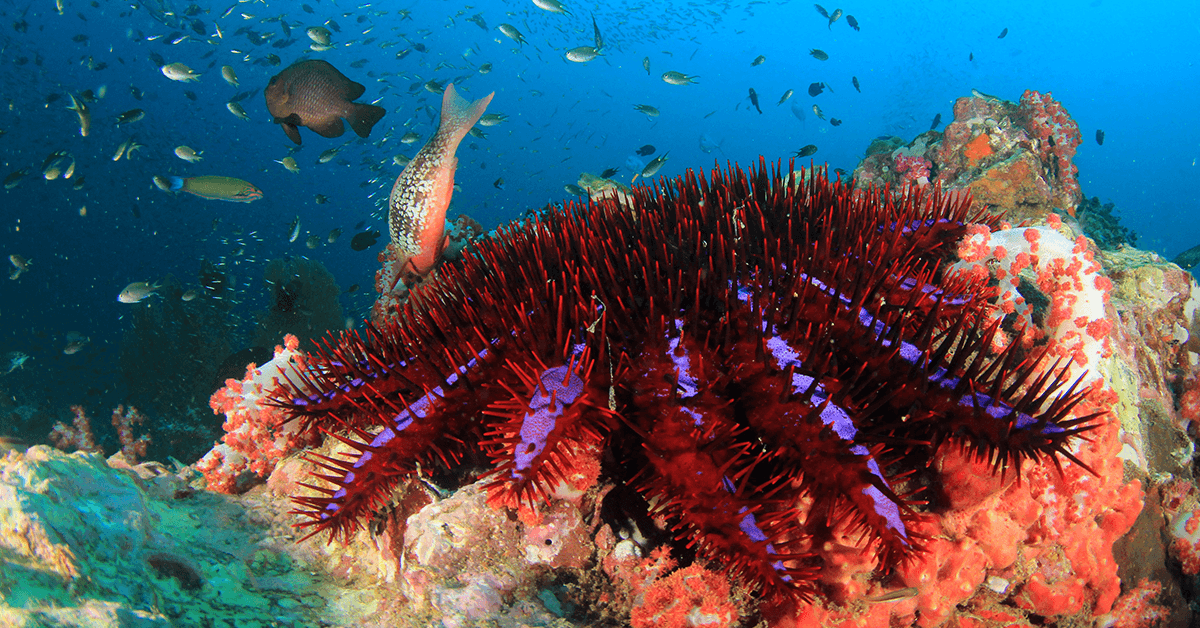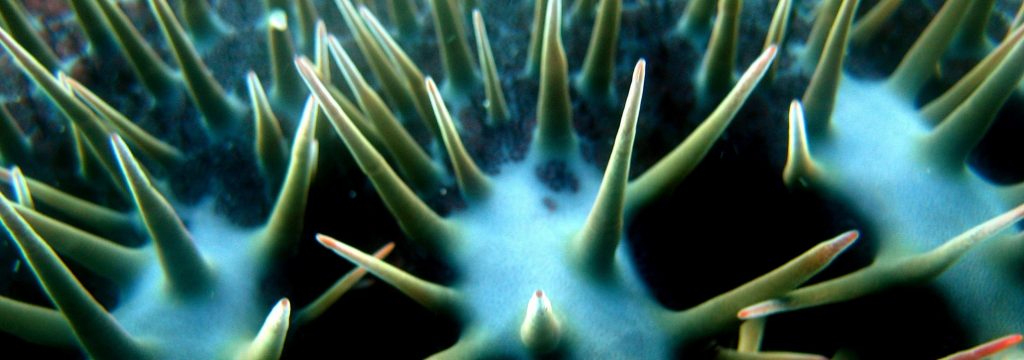
We all know about the worldwide crisis coral reefs are facing on a day to day basis. From overfishing, pollution, climate change and chemical disruption via personal care products such as face wash and sunscreen. But some corals face an additional problem: being eaten by a giant sea star!

Outbreaks of Crown of Thorns Starfish (COTS) pose a significant threat to coral reefs in the Indo-pacific region. According to the Living Ocean Foundation, these starfish often exceed 1,000 animals per hectare and are capable of destroying an entire reef system in a matter of weeks.
One way of being an ocean warrior and ensuring your decisions reflect best practice for our environment is choosing an eco-conscious travel operator. Making an effort to choose the most responsible marine tourism operators while traveling can help to preserve these delicate ecosystems.
Meridian Adventure Dive Hotel has been active in the removal of these little critters since their inception in 2017. Monthly expeditions ensure they remove these infestations and record the data for further research purposes.

It’s believed the sea stars were introduced to the reef through the ballast water of passing cargo ships, and with few predators in Indonesian waters, they have thrived. COTS are known to grow up to half a meter wide and are the second largest starfish in the world. The Living Oceans Foundation also mentions that a single COTS can devour 10 square meters of coral a year. They truly have a significant appetite and can cause great havoc.
Remove COTS in Raja Ampat
Another unknown fact about these predators of coral is that they are covered in venomous spines – making them notoriously difficult to remove which requires special gear such as gloves.
Meridian Adventure Dive Hotel, alongside other dive operators in the area, control and remove COTS where infestations occur - mitigating damage to the coral reefs.

How Does it Work?
- They locate the COTs and take pictures.
- Inject with vinegar water with special equipment.
- Remove the injected COT to dry out on the beach.
- Once dried out, they are buried in the sand.
- Every detail is recorded on a Google Drive document for data enhancement.

COTS outbreaks have the potential to have a devastating impact on coastal communities across the region. Watch a quick video from the Khaled bin Sultan Living Ocean Foundation below:

Wherever you may be - ensure you ask your dive resort about invasive species and keep a look-out during your dives for infestations of 5-10 observed in any one traverse.